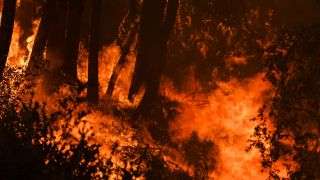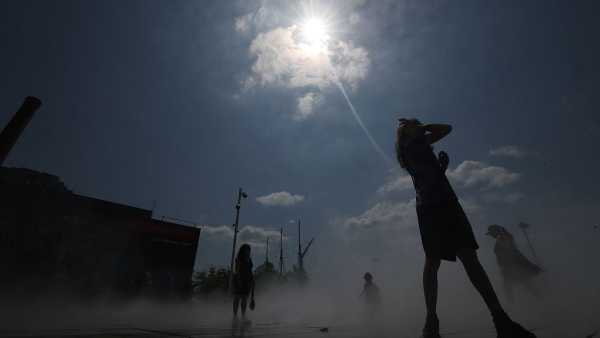
A wildfire grows near a home on Twilight Lane in Santa Cruz, California, on Aug. 19, 2020.
The ancient giants were standing when Jesus was born, and they were still upright when the Normans conquered Britain.
But will the majestic redwoods of California’s coast survive the lightning-sparked fires raging across the state?
One of the biggest conflagrations in the state, the CZU complex fire in San Mateo and Santa Cruz counties, has severely damaged Big Basin State Park, which is home to a sprawling stand of these ancient redwoods, SFGate reported.
But though the buildings and campgrounds may be utterly destroyed, the redwood forests themselves are likely to survive. That’s because these giant trees possess many defenses against flames, a scientist told Live Science.
In the past week, California experienced nearly 11,000 lightning strikes within a span of 72 hours, California Gov. Gavin Newsom noted on Twitter. These strikes, combined with the heat wave California is now experiencing, helped trigger hundreds of wildfires.
Some of these fires have reached the home of the coast redwood (). Growing to 300 feet (90 meters) or more, they are the tallest known living trees in the world, and “can live up to 2,500 years,” said Will Russell, a forest ecologist at San Jose State University in California. He and his family were evacuated from the fires yesterday to a friend’s house.
Although some coast redwoods may die from these fires, “many of the old-growth redwoods will likely survive as well,” Russell said.
Related
— What is the oldest tree in the world?
— What’s the oldest thing alive today?
— Photos of the tallest trees on Earth
Coast redwoods have thick insulating bark, Russell said. Moreover, their tops, or crowns, are high off the ground, often preserving them from wildfires.
In addition, unlike most conifer trees, coast redwoods do not primarily rely on seeds to reproduce, but often reproduce “vegetatively” from parts of their bodies, “which allows for fast regeneration,” Russell said. “They can lose all green leaf tissue from a fire and sprout back vigorously.”
Ultimately, fire can actually benefit many forests. They provide fertilizer in the form of nutrient-rich ash and can open up growing space for young trees to grow.
“Fires are a natural part of the coast redwood ecosystem, and old-growth trees have survived many fires over the centuries,” Russell said.
Sourse: www.livescience.com





